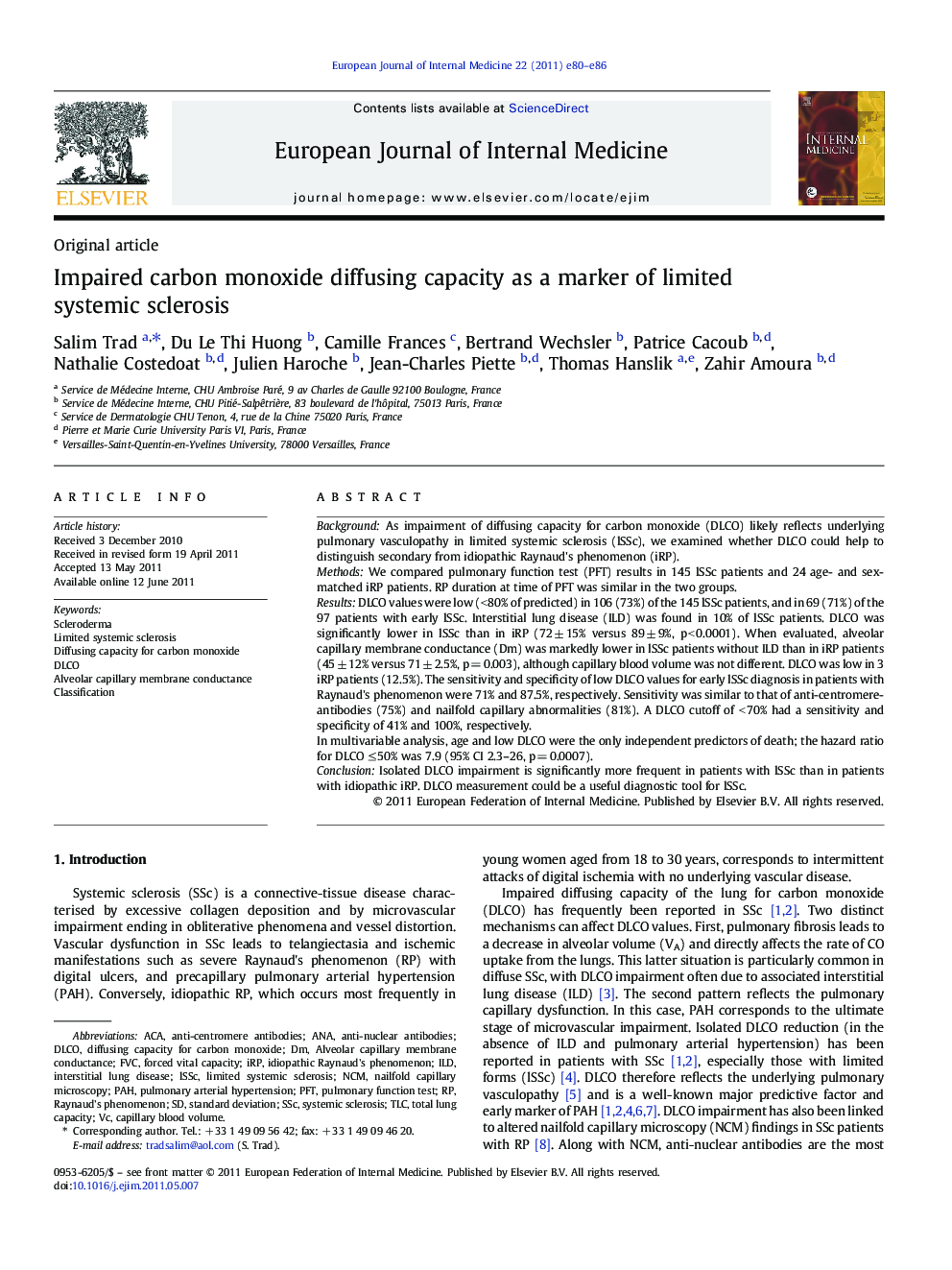| Article ID | Journal | Published Year | Pages | File Type |
|---|---|---|---|---|
| 3467922 | European Journal of Internal Medicine | 2011 | 7 Pages |
BackgroundAs impairment of diffusing capacity for carbon monoxide (DLCO) likely reflects underlying pulmonary vasculopathy in limited systemic sclerosis (lSSc), we examined whether DLCO could help to distinguish secondary from idiopathic Raynaud's phenomenon (iRP).MethodsWe compared pulmonary function test (PFT) results in 145 lSSc patients and 24 age- and sex-matched iRP patients. RP duration at time of PFT was similar in the two groups.ResultsDLCO values were low (< 80% of predicted) in 106 (73%) of the 145 lSSc patients, and in 69 (71%) of the 97 patients with early lSSc. Interstitial lung disease (ILD) was found in 10% of lSSc patients. DLCO was significantly lower in lSSc than in iRP (72 ± 15% versus 89 ± 9%, p < 0.0001). When evaluated, alveolar capillary membrane conductance (Dm) was markedly lower in lSSc patients without ILD than in iRP patients (45 ± 12% versus 71 ± 2.5%, p = 0.003), although capillary blood volume was not different. DLCO was low in 3 iRP patients (12.5%). The sensitivity and specificity of low DLCO values for early lSSc diagnosis in patients with Raynaud's phenomenon were 71% and 87.5%, respectively. Sensitivity was similar to that of anti-centromere-antibodies (75%) and nailfold capillary abnormalities (81%). A DLCO cutoff of < 70% had a sensitivity and specificity of 41% and 100%, respectively.In multivariable analysis, age and low DLCO were the only independent predictors of death; the hazard ratio for DLCO ≤ 50% was 7.9 (95% CI 2.3–26, p = 0.0007).ConclusionIsolated DLCO impairment is significantly more frequent in patients with lSSc than in patients with idiopathic iRP. DLCO measurement could be a useful diagnostic tool for lSSc.
